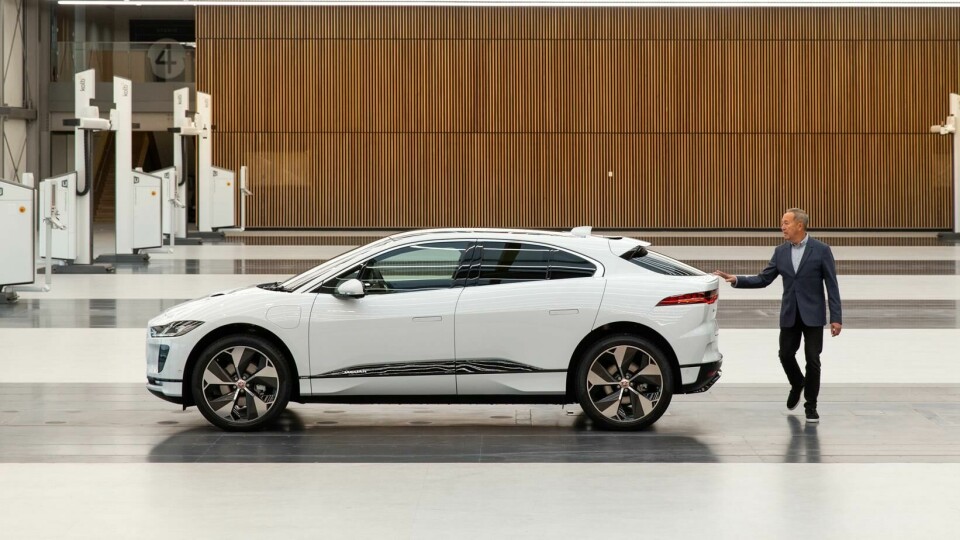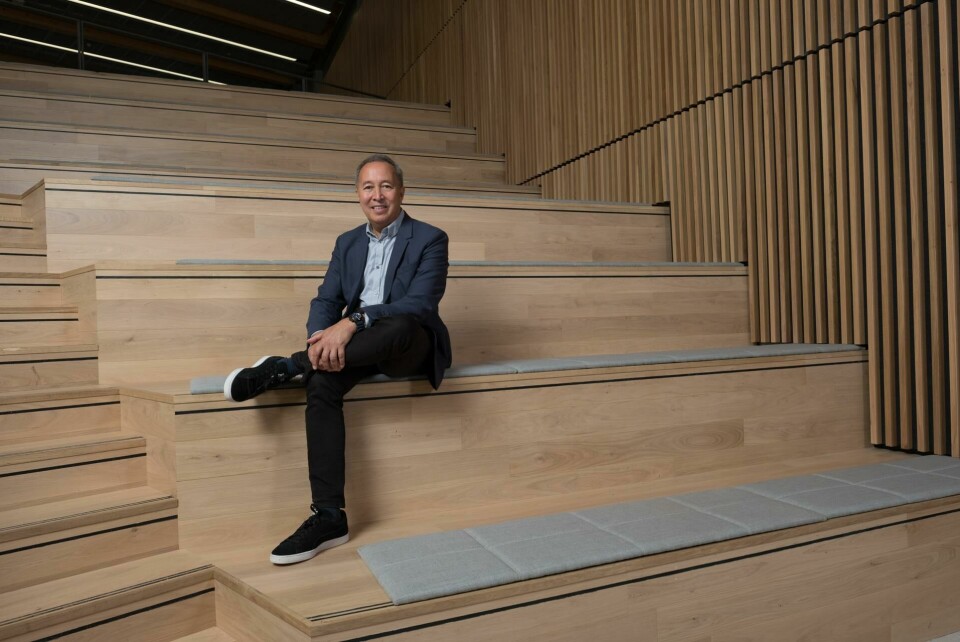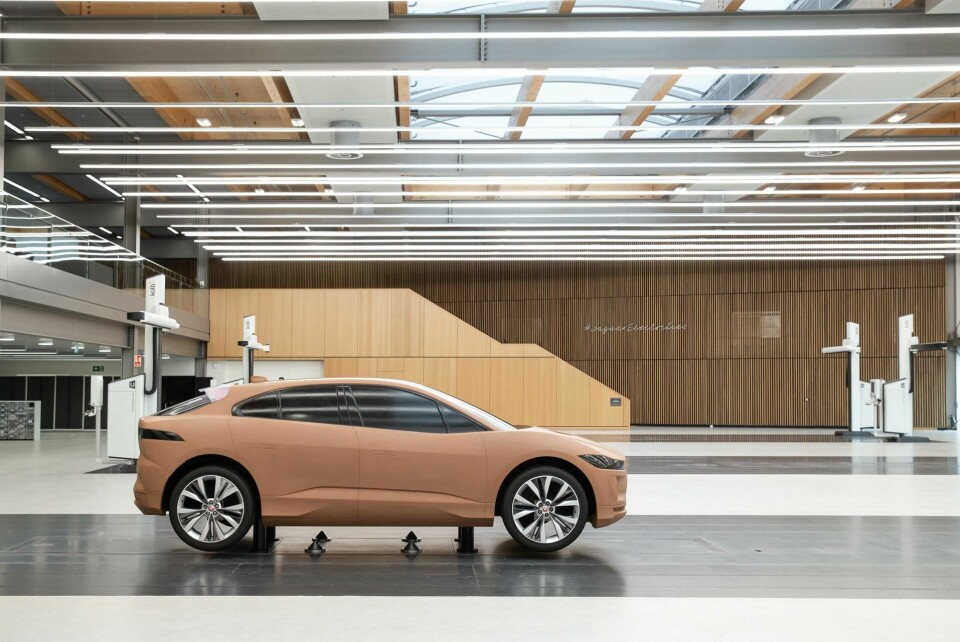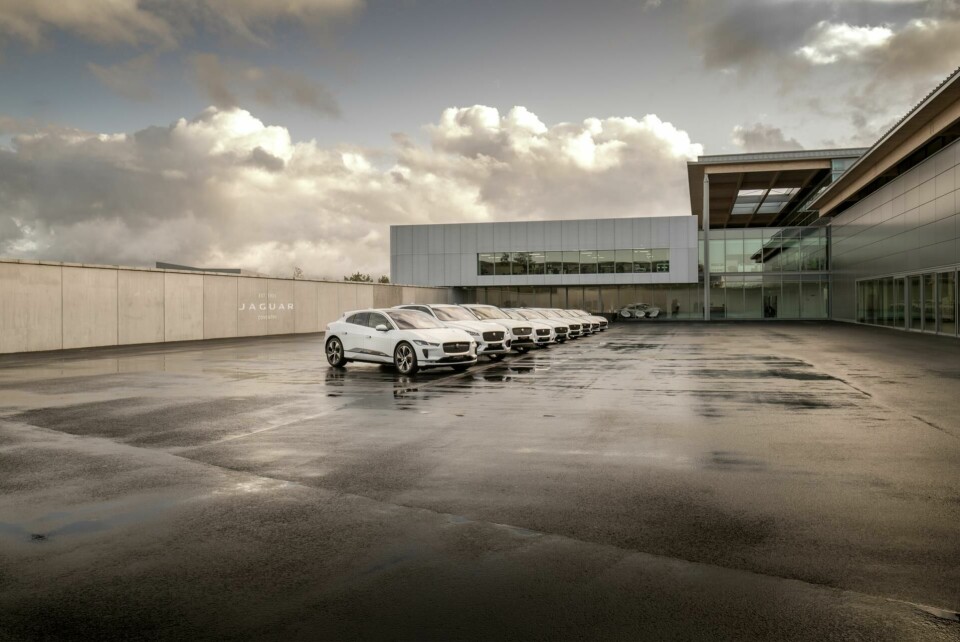
Studio Visit: Jaguar’s new Gaydon studio
12,000m2 facility brings warmth, space and integration to JLR’s design operation
Rising up from the centre of Jaguar Land Rover’s headquarters in Gaydon, is a towering complex of wood and glass. Known as the “Gaydon Triangle,” the campus houses the company’s engineering team, the Land Rover design facilities, and now, Jaguar’s expansive new design studio that’s twice the size of the old space in Whitley.
“We think it’s the most advanced automotive design studio in the world,” Jaguar’s design director Julian Thomson tells us.

The two-story building houses all 280 members of the Jaguar design team, including 50 clay modellers, 40 Alias modellers, and an animation team as well as exterior, interior, and colour & trim designers. “We knew from 2014 that Jaguar would be a part of the Gaydon master plan to integrate all of our functions together under one roof and address the challenges the automotive industry faces,” Jaguar’s interior design director Alister Whelan said. “We all got together – designers, engineers, modellers – and talked about what we wanted, then we got a great designer.”
The company hired UK-based Bennett Associates to design the studio, as well as JLR’s new engineering building. “The first step was to immerse the architects completely in how Jaguar designs cars,” Whelan explained. “We bring a lot of heart and soul into our design and we really wanted that reflected in our new facility.”

Two main studios sit on the ground floor: Studio 3 and Studio 4, a nod to the D-Types that won Le Mans in the 1950s (the old site in Whitley were named 1 and 2). Ceilings extend a full two stories, with the mezzanine-style first floor and its workstations visible above. Nearly 3000 square feet of windows – including three full-length skylights – bathe the space in natural light, but where some studios can feel austere and clinical, Jaguar’s new home feels warm and welcoming, thanks to extensive use of caramel-toned wood.
Each studio has ten modelling plates, one of which was being used during our tour to mill the exterior of a fictitious design study for demonstration purposes (and we even got a hands-on clay modelling lesson). “A lot of what we do is about doing the clay models, so there’s a lot of space around the plates,” Thomson told us. Each plate is 20 metres long and can accommodate two clays, with a load capacity of up to 4.5 tonnes. That means Jaguar designers can, for the first time, look at interior and exterior models side-by-side. Plates also have integrated floor lifts, which allow for continuous height adjustment of the models.

One side of Studio 4, which faces north for the best natural light, is lined with a row of glass roll-up doors that lead to a large outdoor presentation area. Near the back of the studio is ‘the Steps’, an amphitheatre-style seating area where designers and other Jaguar employees can meet to hear informal talks about cars or other subjects.
Connecting the two studios on the ground floor is the “heart space,” a meeting area where people can visit, have a cup of tea and even leave items of inspiration (on the day we visited, that included one of the team member’s bicycles). “It’s important that everyone chats and feels free to do the most creative things possible every day,” Thomson tells us.
Upstairs, the workstations in the open mezzanine area belong to various departments, including program managers, the branded goods team, and the Class A surface modellers (who, we’re told, are the only shared asset between Jaguar and Land Rover). Also on the second level is a visualisation room with an 11-metre presentation screen. Throughout the building there are large pictures of historic Jaguar racing and production cars. Conference rooms are named after significant people from Jaguar and motorsport history, such as Steve McQueen, the late Jaguar design director Geoff Lawson, and Sir William Lyons, co-founder of the Swallow Sidecar Company which later became Jaguar Cars, Ltd. “There are so many references to the brand’s history,” Thomson says.
Even Ian Callum, Jaguar’s former design director who is now working on his own projects, was on hand for the opening. “It’s fun to see,” Callum told us. “It’s got the warmth that Julian and I wanted, and that’s very important. We [designers] are very floppy, we’re very soft, we like things to be nice.” Perhaps the most significant change, he says, is the proximity of all the departments. “Before we were in four different quadrants and nobody ever really saw each other. This is different, they can all shout across the way. The physical side is important, breaking it up and putting the people in the right place.”
Every person we talked to during our tour, from UI designers to colour & materials experts, echoed Callum’s sentiments, singing the praises of being so close to one another.
With all this new space, many are wondering if the Jaguar design team will expand. On that topic, Thomson remains diplomatic. “We are very sensitive about the team spirit and adding to the team, so we are very cautious about who we hire,” he tells us. “We pick all of our designers, all of our modellers, all of our engineers very carefully.” At the same time, he hopes the new studio will be a source of pride not only for the people who work there, but also for the car design industry as a whole. “What we hope to do is really inspire the rest of the business, with our processes, with all the things we do.”
Meanwhile, he says, the team will put away the mock project that was trotted out for prying journalists and get back to the business at hand. “After you leave, we will get all our cars out of the storeroom,” Thomson admits with a smile. “And those are much better.”
.



































